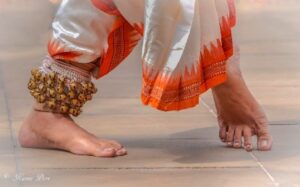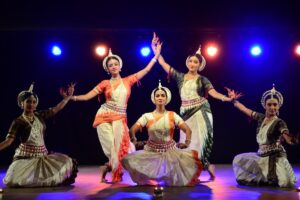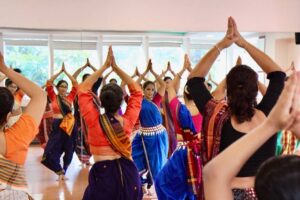The mardala is a percussion instrument that is commonly used in the classical Indian dance form of Odissi. The mardala is a small drum that is played with the hands and is used to provide a rhythmic accompaniment to the dance. The mardala is an integral part of the Odissi ensemble and is typically played by a skilled musician who is trained in the classical Indian musical tradition.
The origins of the mardala are not well documented, and it is difficult to trace the exact evolution of the instrument. However, it is believed to have originated in the eastern part of India, specifically in the state of Odisha, where it is an integral part of the Odissi dance form.
The mardala is thought to have evolved from a variety of traditional percussion instruments that were used in ancient India, including drums and other percussion instruments that were used in temple dance traditions. Over time, the mardala has evolved and been influenced by various cultural and artistic traditions, and it has become an important part of the classical Indian musical and dance traditions.
The mardala is typically made of wood and is cylindrical in shape, with a drumhead made of animal skin stretched over one end. The drumhead is tightened using cords or ropes, and the tension of the drumhead can be adjusted to alter the sound of the drum. The mardala is played by striking the drumhead with the hands, using various techniques and patterns to create different rhythms and melodies. The sound of the mardala is deep and resonant, and it is used to provide a strong rhythmic foundation for the dance. The mardala is often used to create a specific mood or atmosphere for the dance, and it is an important part of the Odissi ensemble.
The mridangam is a larger drum that is also played with the hands and is commonly used in classical South Indian music. It is typically made of wood and is barrel-shaped, with two drumheads made of animal skin stretched over opposite ends. The sound of the mridangam is more complex and varied than that of the mardala, and it is used to provide a wide range of rhythmic accompaniment in classical South Indian music. In summary, the main difference between the mardala and the mridangam is their size and the complexity of their sound.
Adiguru Singhari Shyamsundar Kar, Guru Banamali Maharana, Guru Padmanabha Panda, Guru Basudeba Khuntia, Guru Mahadeba Rout, Guru Narayana Mahapatra, Guru Banamali Maharana and Guru Kelucharan Mahapatra were among the great Gurus of Mardala in the 20th century.






